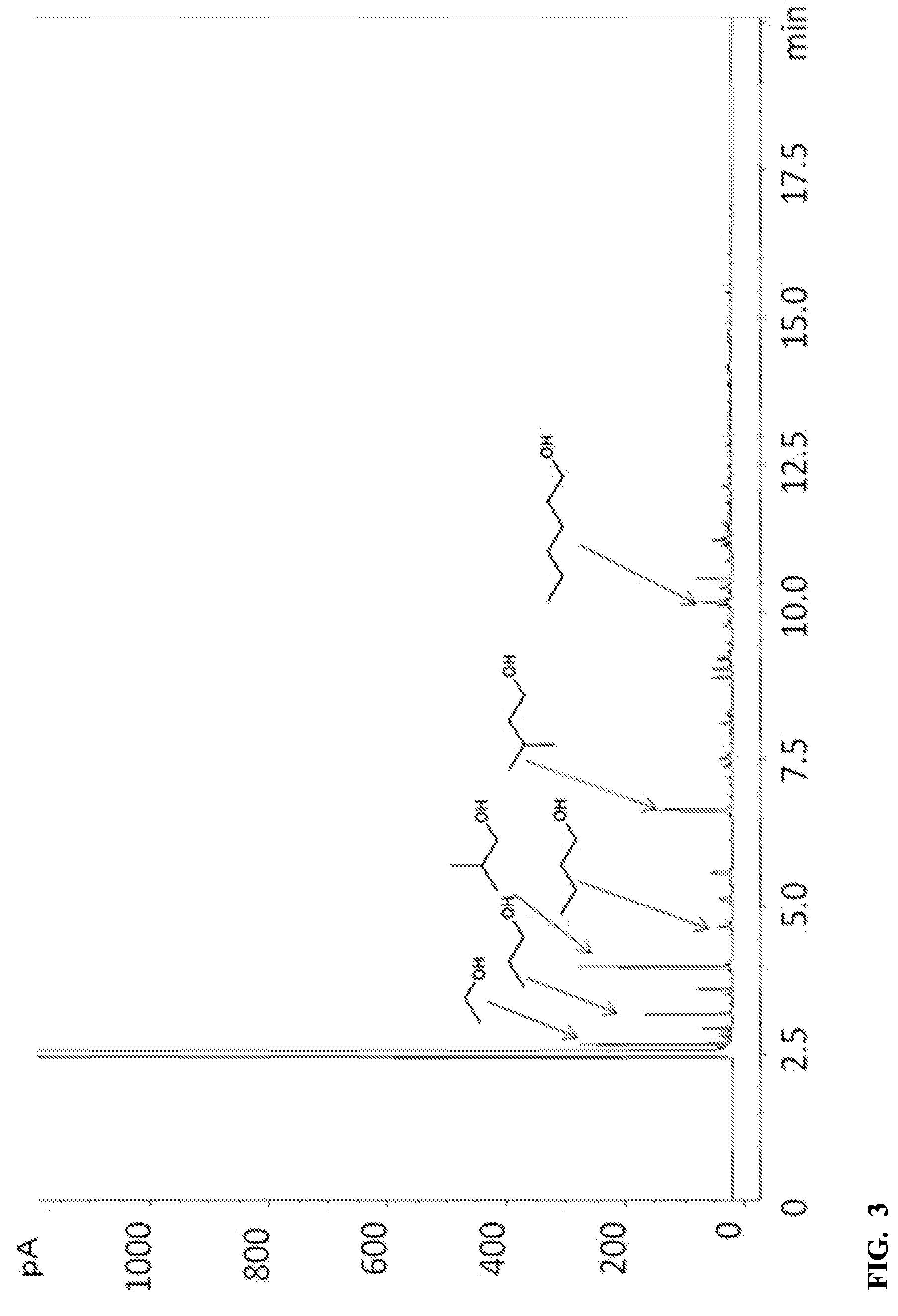Process for direct conversion of biomass to liquid fuels and chemicals
a technology of biomass and liquid fuel, applied in the direction of metal/metal-oxide/metal-hydroxide catalyst, combustible gas production, chemical production, etc., can solve the problems of large quantity of char, most cumbersome and problematic, and achieve rapid hydrogenation, reduce energy wasted in biomass transport, and prevent over-dehydration of materials and chemicals
- Summary
- Abstract
- Description
- Claims
- Application Information
AI Technical Summary
Benefits of technology
Problems solved by technology
Method used
Image
Examples
example 1
Materials
[0059]Maple sawdust was obtained as a byproduct of sanding the corresponding oven-dried lumber using 80 grit sandpaper. A large representative sample (>100 g) was collected. The fraction of the powder (>95%) that passed across a 63μ screen (>230 mesh) was used without further modification. A ternary metal oxide catalyst Cu / Mg / Al with 15 / 60 / 25 molar ratio (Cu20-PMO), known to be active for enforcing the CH3OH=CO+2H2 and CO+H2O=CO2+H2 equilibria and for aryl ether hydrogenolysis, was prepared according to a published procedure (4).
Experimental Procedures
[0060]A 10 mL Swagelok union was charged with 100 mg of Cu20-PMO, 100 mg of maple sawdust, 2.4 g CH3OH, purged with argon, sealed, weighed and placed in a pre-heated aluminum block at 300° C. for 24 hours. The reactor was then rapidly cooled to room temperature and weighed. Data were discarded if the post-reaction weight deviated by more than 10 mg from the pre-reaction weight.
[0061]A small aliquot of the liquid product was se...
example 2
[0063]For comparison, the same experimental procedures as in Example 1 were used, except that the reaction was conducted at 320° C. for 8 hours. Gases were collected by opening the reactor under a water-filled graduated cylinder using the displacement of water to quantify total volume. The distribution of H2 / CO / CO2 / CH4 collected following reaction was 22 / 6.1 / 4.7 / 0.9 mmol. The GC-FID trace of the liquid products of this run is provided in FIG. 3 and indicates that the products comprise a mixture of 5.9 / 2.0 wt % HAE / CAE in methanol. The extent of conversion was 99%.
[0064]According to this example, comparable conversion of solid carbonaceous material may be obtained over a shorter period of operation when the reactions are practiced at a higher temperature.
example 3
[0065]For comparison, the same experimental procedures as in Example 2 were used, except that a commercial sample of 207 mg of ponderosa pine flour (American Wood Fibers, 140 mesh maximum) was substituted for maple. Upon opening the reactor, 30 mmol of a syngas mixture was expelled. Analysis of the liquid products indicated a mixture of 8.4 / 3.6 wt % HAE / CAE in methanol. The extent of conversion was 96%. In this run, 9 mg of unreacted wood remained after titration.
[0066]According to this example, the use of a larger quantity of biomass results in the production of a larger quantity of fluid product. Furthermore, the use of wood derived from coniferous trees is comparable to the use of wood derived from deciduous trees in the reactions.
PUM
| Property | Measurement | Unit |
|---|---|---|
| temperature | aaaaa | aaaaa |
| weight | aaaaa | aaaaa |
| wt % | aaaaa | aaaaa |
Abstract
Description
Claims
Application Information
 Login to View More
Login to View More - R&D
- Intellectual Property
- Life Sciences
- Materials
- Tech Scout
- Unparalleled Data Quality
- Higher Quality Content
- 60% Fewer Hallucinations
Browse by: Latest US Patents, China's latest patents, Technical Efficacy Thesaurus, Application Domain, Technology Topic, Popular Technical Reports.
© 2025 PatSnap. All rights reserved.Legal|Privacy policy|Modern Slavery Act Transparency Statement|Sitemap|About US| Contact US: help@patsnap.com



